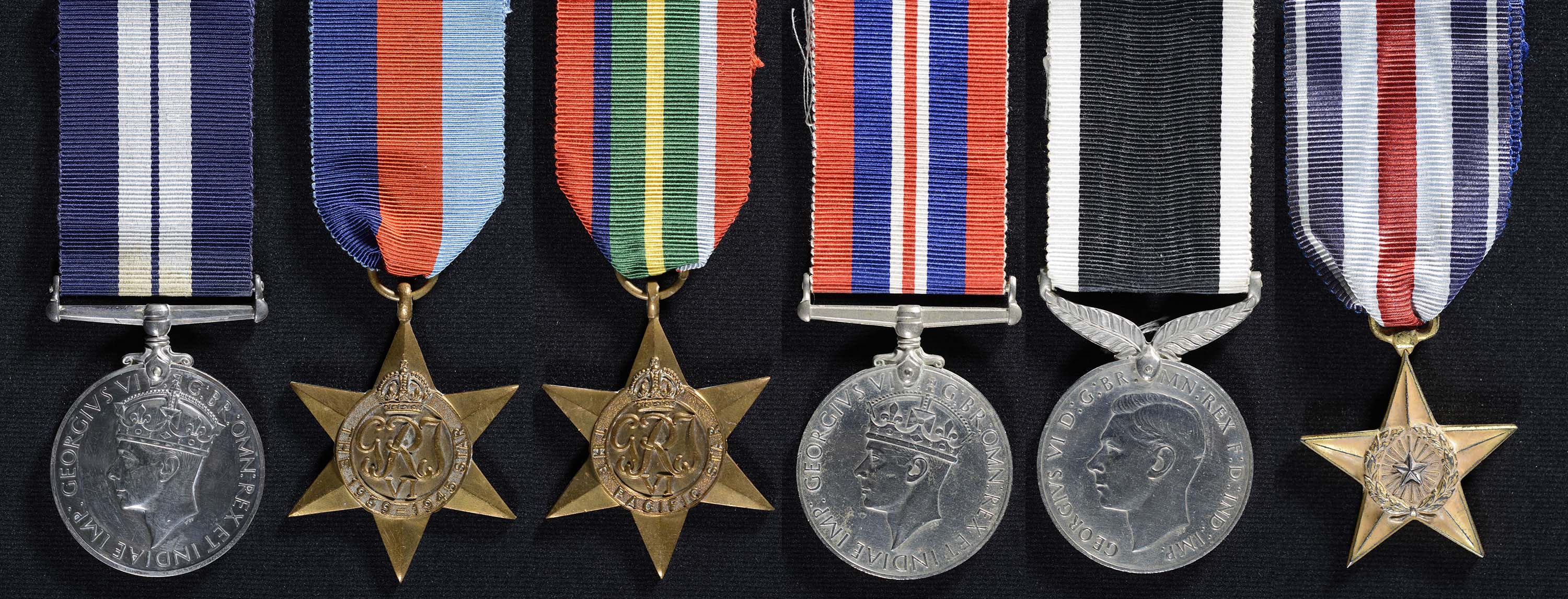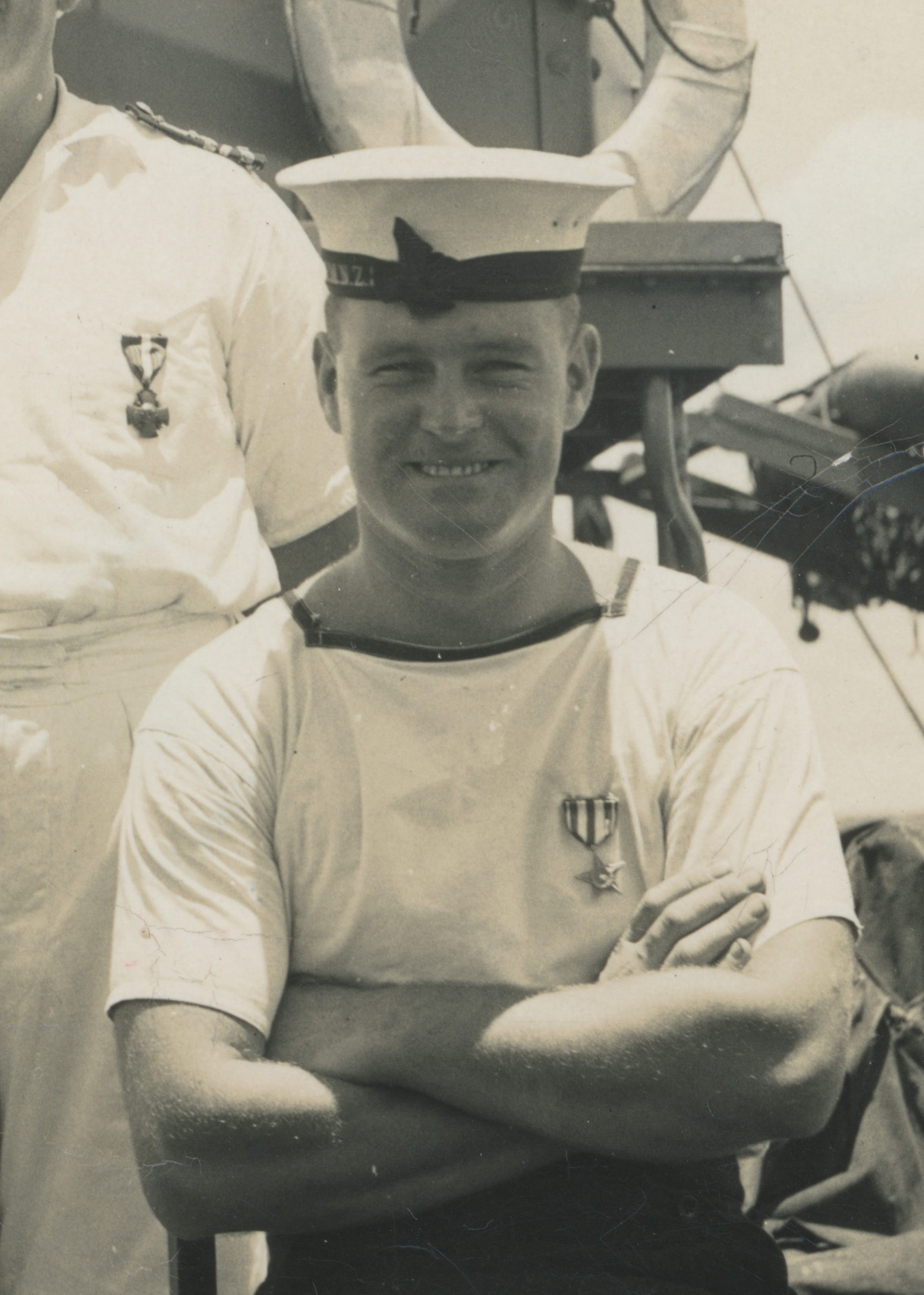

Display No. 9K
DALTON, Aubrey Edward James
Aubrey Dalton enlisted in the New Zealand Division of the Royal Navy during the Second World War. He trained in HMS Tamaki on Motuihe Island. Dalton was then sent to the United Kingdom for further training. Dalton joined the ship’s company of HMNZS Kiwi when it was commissioned in October 1941 and served in the Pacific. He was serving in Kiwi when on the night of 29th January 1943, Kiwi and Moa intercepted, engaged, and sank the Japanese submarine I-1 off the Solomon Islands. Dalton manned the forward Oerlikon gun during a period when the 4 inch gun was inoperative. He poured fire into the I-1 which prevented them from operating their 5 inch gun successfully. For his part in the action, Dalton was awarded the Distinguished Service Medal (DSM) as well as the Silver Star by the United States Navy. His citation states, ‘His determined and courageous performance contributed directly to the destruction of the enemy craft. Throughout the hazardous night action, his conduct was in keeping with the highest traditions of the Naval Service’. Dalton remained with HMNZS Kiwi until January 1944. He then returned to Auckland where he was attached to the minesweeper HMNZS Duchess and then the Harbour Defence Motor Launch HDML 1185. He was discharged from the Royal New Zealand Navy at the end of the war.
Awarded medal(s)
Medal Description [Left to Right]:
The Distinguished Service Medal (DSM)
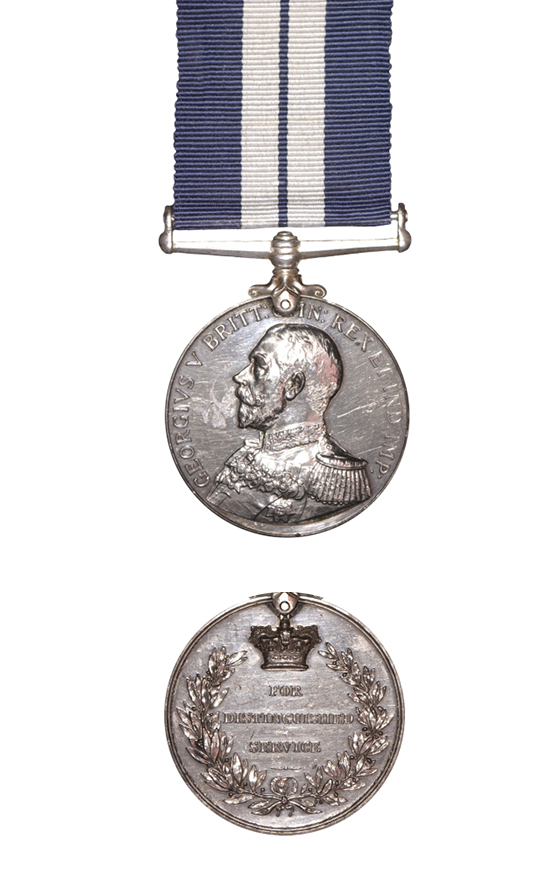
The Distinguished Service Medal (DSM) was instituted in 1914 for senior and junior ratings of the Navy. It was awarded for acts of bravery in the face of the enemy for which the award of the Conspicuous Gallantry Medal was not considered appropriate. It was replaced in 1999 by the New Zealand Gallantry Decoration. The ribbon has three equal stripes: dark blue, white and dark blue with a thin dark blue stripe down the centre of the white stripe.
The 1939-1945 Star
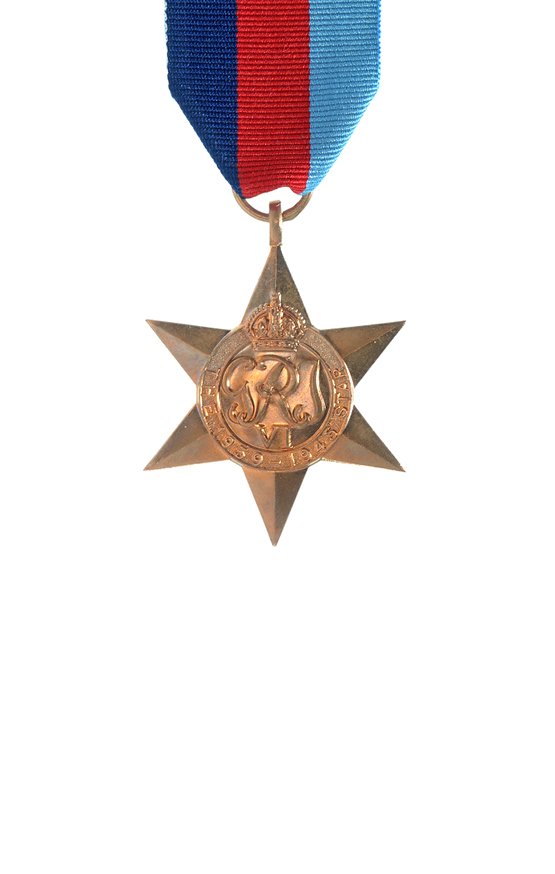
The 1939-45 Star is the first in a series of eight campaign stars instituted in 1945 to recognise service in World War Two. The ribbon has three equal vertical stripes of dark blue, red and light blue. The dark blue stripe symbolises the service of the Navy and the Merchant Navy, the red stripe symbolises the service of the Army, and the light blue stripe symbolises the service of the Air Force. The equal width bands represent the equal contributions of the three service arms towards victory. The ribbon was devised by King George VI. Two clasps could be awarded with this medal: ‘Battle of Britain’ and ‘Bomber Command’. Only aircrew would qualify for these clasps although a small number of Fleet Air Arm naval pilots flew for the air force and would be eligible for the ‘Battle of Britain’ clasp.
The Pacific Star
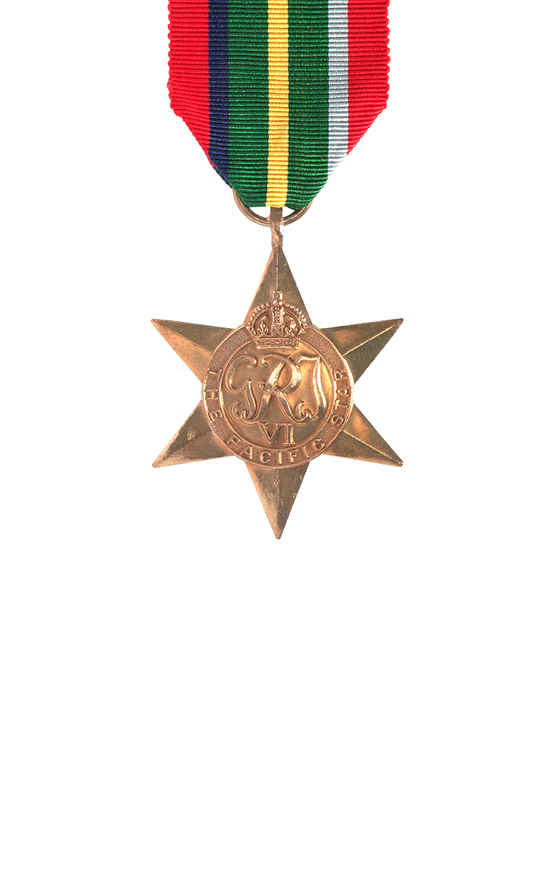
The Pacific Star was awarded in the Second World War for operational service in the Pacific between 8 December 1941 and 2 September 1945. This medal was also awarded for certain specified service in China, Hong Kong, Malaya and Sumatra: between 8 December 1941 and 25 December 1941 (for Hong Kong); between 8 December 1941 and 15 February 1942 (for China and Malaya); and between 8 December 1941 and 23 March 1942 (for Sumatra). The centre of the ribbon is dark green (symbolising the jungle) with a central yellow stripe (symbolising the beaches). On the outer edges are wide stripes of red (representing the Army), with narrow stripes of dark blue and light blue (representing the Navy and Air Force) between the stripes of dark green and red. A ‘Burma’ clasp could be awarded with this medal. Personnel qualifying for both the Pacific and Burma Stars were awarded the first star but only a clasp in respect of the second.
The War Medal 1939-1945
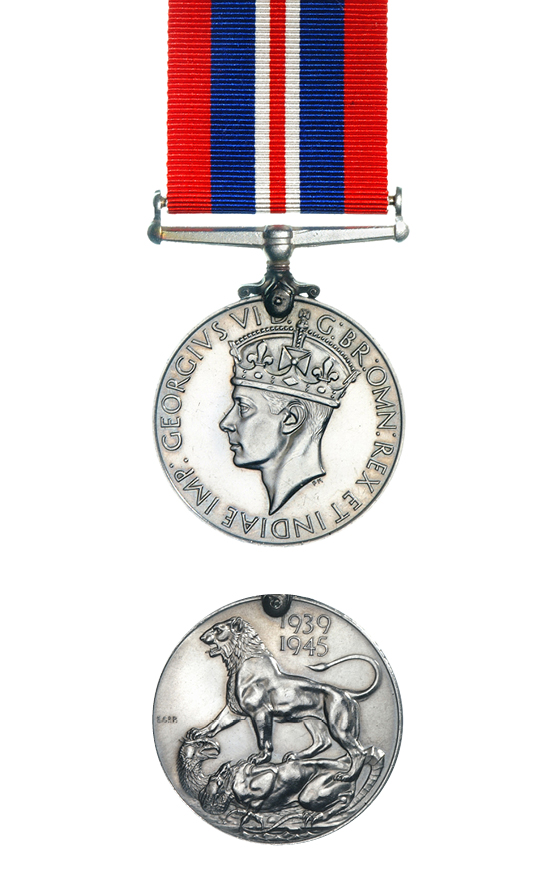
The War Medal 1939-45 was awarded across the British Commonwealth to all full-time members of the Armed Forces in the Second World War for 28 days service between 3 September 1939 and 2 September 1945, irrespective of where they were serving. The ribbon is the red, white, and blue of the (British) Union Flag. There is a narrow central red stripe with a narrow white stripe on either side. There are broad red stripes at either edge, the two intervening stripes being blue.
A bronze oak leaf on the medal ribbon denotes that the recipient was Mentioned in Despatches. To be Mentioned in Despatches a member of the armed forces had their name mentioned in an official report, written by a superior officer, and sent to a higher command. The report would describe the individual’s gallant or meritorious action in the face of the enemy.
The New Zealand War Service Medal
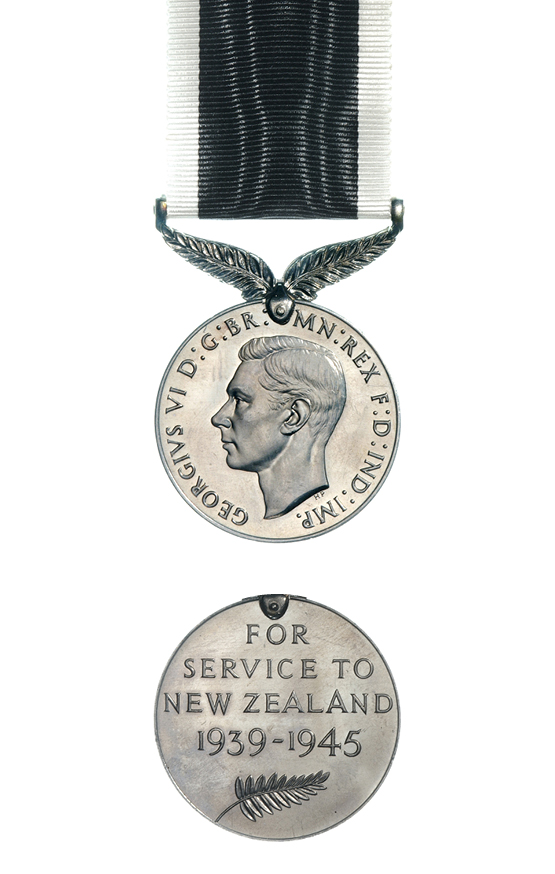
The New Zealand War Service Medal was awarded for 28 days’ full time service or six months’ part time service in the Second World War in any of the New Zealand Armed Forces including the Reserves, Naval Auxiliary Patrol Service, or Home Guard, between 3 September 1939 and 2 September 1945.
United States Silver Star
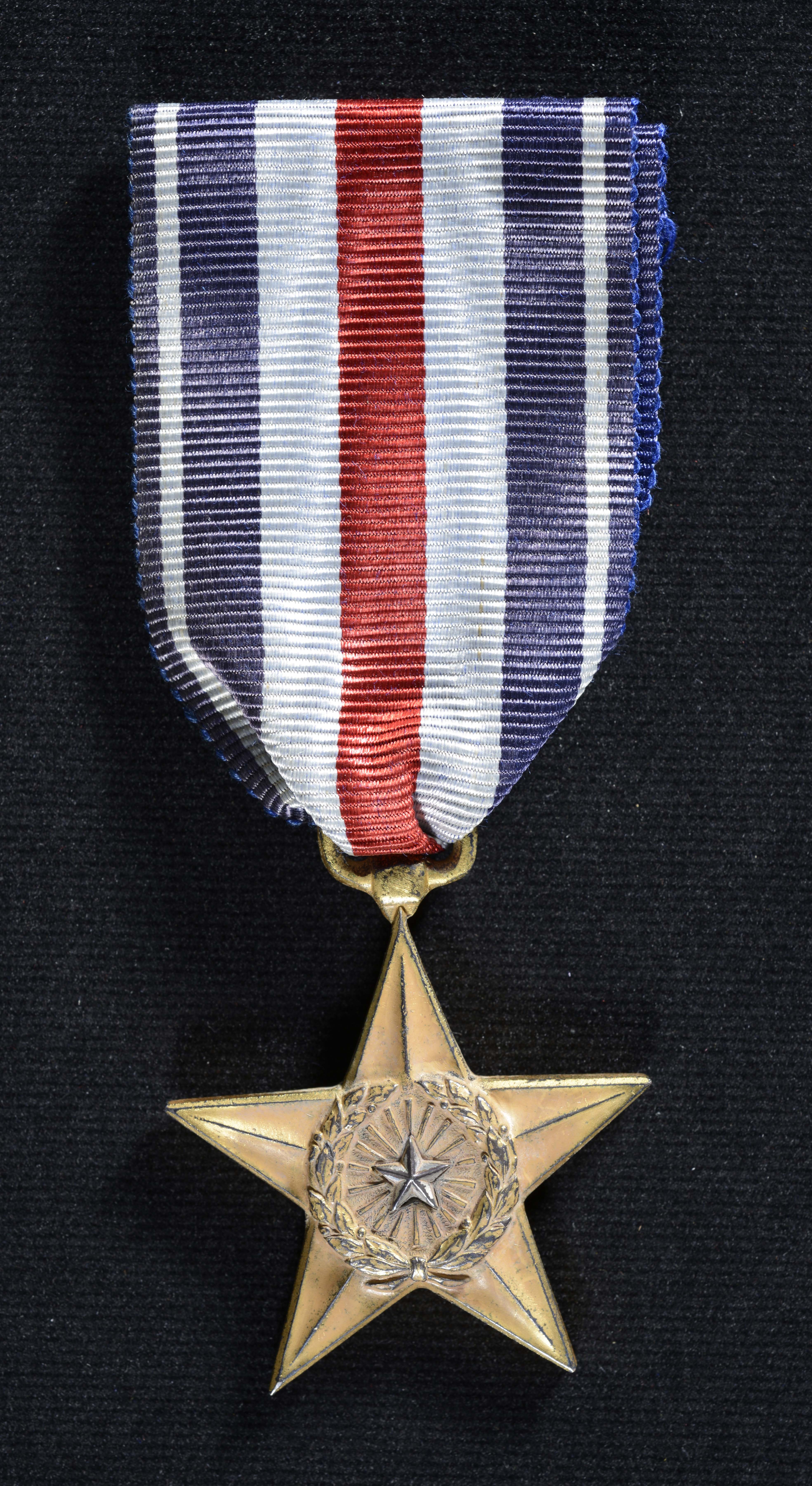
United States Armed Forces’ third highest military decoration for valour in combat. It is awarded primarily to members of the United States Armed forces for gallantry in action against an enemy of the United States.

